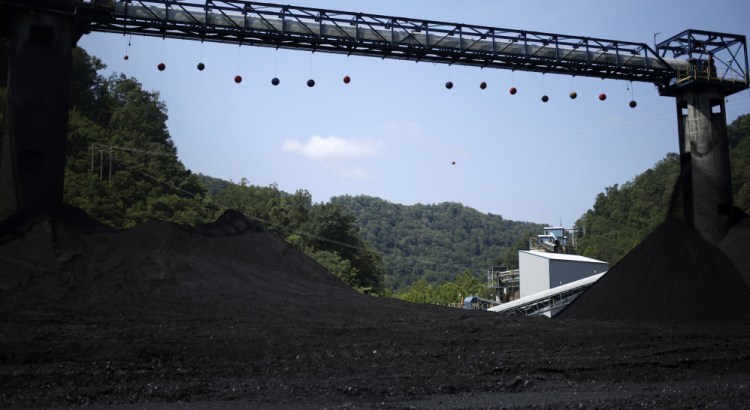A worsening financial crisis for the nation’s biggest coal companies is sparking concerns that U.S. taxpayers could be stuck with hundreds of millions, if not billions, of dollars in cleanup costs across a landscape of shuttered mines stretching from Appalachia to the northern Plains.
Worries about huge liabilities associated with hundreds of polluted mine sites have mounted as Peabody Energy, the world’s largest publicly traded coal company, was forced to appeal to creditors for an extra 30 days to pay its debts. Two of the four other biggest U.S. coal companies have declared bankruptcy in the past six months.
Under a 1977 federal law, coal companies are required to clean up mining sites when they’re shut down. But the industry’s plummeting fortunes have raised questions about whether companies can fulfill their obligations to rehabilitate vast strip mines in Western states – many of which are on federally owned property – as well as mountaintop-removal mining sites in the East.
A number of smaller companies have defaulted or skimped on cleanup obligations, leaving behind abandoned strip mines and denuded mountains. Some are simply eyesores, unhealed scars on the landscape that can be seen for miles. Others are perpetual sources of water pollution, slowly leaking acidic and otherwise toxic wastes into streams and groundwater supplies.
Now coal giants are facing outcomes similar to those experienced by some of the smaller companies. Several are struggling to make payments on debts for ill-timed multibillion-dollar acquisitions of their rivals in recent years. On top of that, they have been financially squeezed by competition from cheap natural gas and declining U.S. and Chinese demand for coal.
The biggest coal companies typically pay third parties to ensure that mine sites are cleaned up in the event of financial hardship. But in recent years, many coal companies have relied on a cheaper technique called “self-bonding,” pledging only their own names and financial wherewithal to guarantee their cleanup obligations.
With mounting losses and debt loads, the companies do not have enough money to pay for all their obligations, and self-bonding is “not worth the paper it’s written on,” Steve Jakubowski, a bankruptcy lawyer with the firm Robbins, Salomon & Patt, said in an email.
In a bankruptcy, where Alpha Natural Resources is now, a judge can decide which creditors are paid and how much – and state and federal governments could be left holding the bag for reclamation costs.
“There is a lot of liability out there and a lot of uncertainty,” said Shannon Anderson, a lawyer with the Power River Basin Resource Council, a Wyoming nonprofit group that supports tougher rules for cleaning up mine sites.
Peabody alone has cleanup obligations of nearly $1.4 billion guaranteed by self-bonding, according to statements filed by the company last year with the Securities and Exchange Commission. Arch Coal and Alpha – the nation’s second- and fourth-largest coal companies – have self-guaranteed liabilities exceeding $485 million and $640 million, respectively, in reclamation costs.
The coal giants are currently in no condition to spend those amounts.
Bankruptcy restructuring could provide coal companies with a way of escaping obligations to restore land.
It wouldn’t be the first time the federal government covered the costs of corporations’ environmental pollution.
Send questions/comments to the editors.



Success. Please wait for the page to reload. If the page does not reload within 5 seconds, please refresh the page.
Enter your email and password to access comments.
Hi, to comment on stories you must . This profile is in addition to your subscription and website login.
Already have a commenting profile? .
Invalid username/password.
Please check your email to confirm and complete your registration.
Only subscribers are eligible to post comments. Please subscribe or login first for digital access. Here’s why.
Use the form below to reset your password. When you've submitted your account email, we will send an email with a reset code.